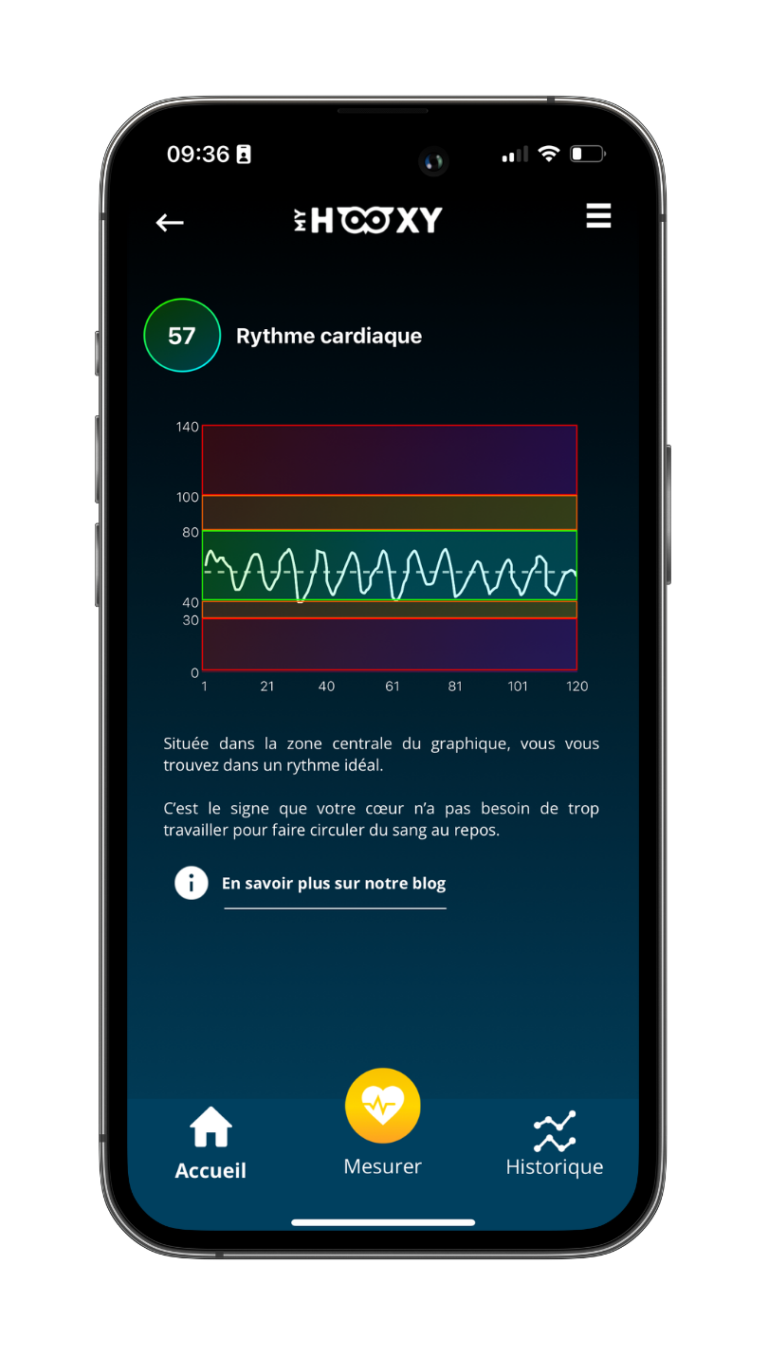
What is the heart rate ?
The heart is at the center of the body’s circulatory system, consisting of a network of blood vessels (arteries, veins and capillaries) that carry blood to and from all areas of the body. Your heart’s electrical system controls the frequency and rhythm of your heartbeats.
Heart rate is the number of heartbeats per minute. A normal resting heart rate is between 60 and 80 beats per minute (bpm), and varies from person to person. An athlete, for example, generally has a lower resting heart rate. Heart rate is influenced by physiological factors such as the circadian cycle, posture, blood pressure and physical activity. It speeds up and slows down to adapt to changing oxygen requirements as activities vary throughout the day.

Do I need to measure my heart rate regularly?
Yes !
Unusual resting heart rate has been directly linked to all-cause mortality, cardiovascular mortality and the development of cardiovascular disease in the general population, making heart rate a very important marker of health. In particular, certain types of heart disease have been associated with lower heart rate [1], while atherosclerosis, sudden death and an increased risk of dying from cardiovascular disease have been associated with higher heart rate [2,3]. [It is also known that hypoglycemia in diabetics can lead to a dangerously low heart rate. Distinct and altered circadian patterns of heart rate over 24 hours have also been found to be associated with different and specific psychiatric disorders[4].
This is why your doctor usually measures your heart rate during a consultation, and why it’s important to measure it regularly. Even better than measuring your heart rate during a medical visit, you can measure it yourself and understand your “normal numbers”.
What happens when my heart rate is outside the “normal” range?
An arrhythmia is a problem with heart rate or rhythm. An abnormal heart rhythm occurs when the heart beats too fast (tachycardia), too slow (bradycardia) or irregularly. Arrhythmia can be caused by environmental factors, such as stress, caffeine or fever, but it can also be a sign of a medical problem, such as an increased risk of heart attack. A vascular lesion due to disease or physical trauma that weakens the heart, or a problem with the electrical system regulated by the nervous and endocrine systems that control heart rate and blood pressure, can make it more difficult for the heart to pump blood.
Unusual resting heart rate has been directly linked to all-cause mortality, cardiovascular mortality and the development of cardiovascular disease in the general population, making heart rate a very important marker of health. In particular, certain types of heart disease have been associated with lower heart rate [1], while atherosclerosis, sudden death and an increased risk of dying from cardiovascular disease have been associated with higher heart rate [2,3]. [It is also known that hypoglycemia in diabetics can lead to a dangerously low heart rate. Distinct and altered circadian patterns of heart rate over 24 hours have also been found to be associated with different and specific psychiatric disorders[4].
It’s important to remember that heart problems are usually “silent” at first, but when detected early, are usually reversible.
Bibliography
Makita S, Onoda T, Ohsawa M, Tanno K, Tanaka F, Omama S, Yoshida Y, Ishibashi Y, Itai K, Sakata K, Ohta M, Kuribayashi T, Ogasawara K, Ogawa A, Okayama A, Nakamura M. Bradycardia is associated with future cardiovascular diseases and death in men from the general population. Atherosclerosis. 2014 Sep;236(1):116-20. doi: 10.1016/j.atherosclerosis.2014.06.024. Epub 2014 Jul 1. PMID: 25020106.
Zhang D, Shen X, Qi X. Resting heart rate and all-cause and cardiovascular mortality in the general population: a meta-analysis. CMAJ. 2016;188(3):E53-E63. doi:10.1503/cmaj.150535
B.N. Singh, Increased heart rate as a risk factor for cardiovascular disease, European Heart Journal Supplements, Volume 5, Issue suppl_G, September 2003, Pages G3–G9,
Stampfer, H., & Dimmitt, S. (2013). Variations in circadian heart rate in psychiatric disorders: theoretical and practical implications. ChronoPhysiology and Therapy, 3, 41-50.